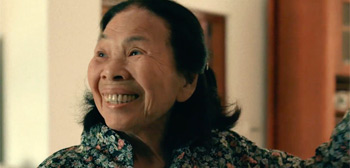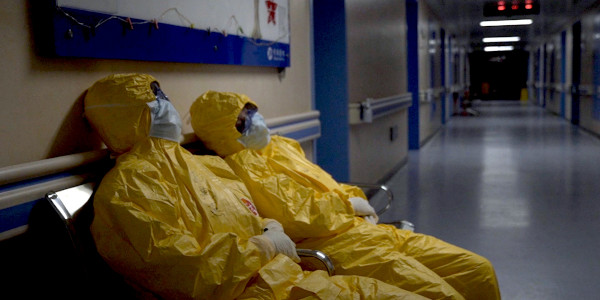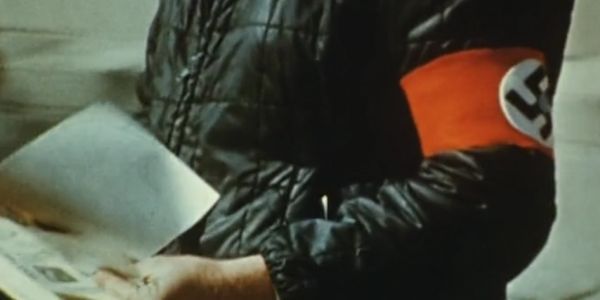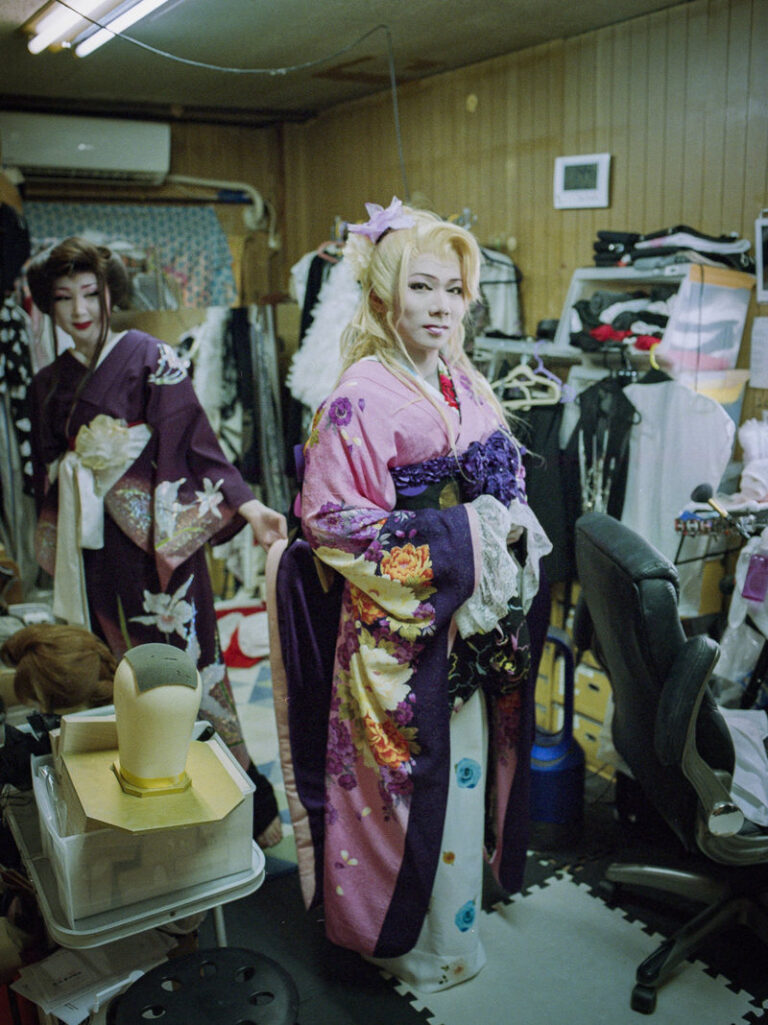28 Things We Learned from David Leitch’s ‘Bullet Train’ Commentary
Welcome to Commentary Commentary, where we sit and listen to filmmakers talk about their work, then share the most interesting parts. In this edition, Rob Hunter revisits the successful but much maligned Bullet Train with a commentary from its director.
David Leitch and Chad Stahelski are the two big names behind 87 Eleven Action Design, the professional stunt team that rose to prominence with the release of 2014’s John Wick. While Stahelski directed that film and its three sequels, Leitch branched out for his own solo efforts including Atomic Blonde (2017), Deadpool 2 (2018), Hobbs & Shaw (2019), and 2022’s Bullet Train. All four were box-office hits, and the first three earned a “fresh” rating via Rotten Tomatoes. Bullet Train, though, continues to be lambasted by critics and #FilmTwitter on a regular basis.
The film is a bit overstuffed, and it’s trying way too hard to make you like it, but that aside it’s a perfectly fun popcorn flick. Fun cast, some laughs, and a good supply of entertaining action beats — Bullet Train is fine, people.
Leitch’s latest feature, The Fall Guy, hits theaters today, and while it’s too early to tell if it’ll win over audiences and/or critics, it’s a movie I’m looking forward to seeing. Between the new film and the ongoing hate for Leitch’s last effort, it felt like the right time to revisit Bullet Train — via Leitch’s commentary. So keep reading to see what I heard on the commentary track for…
Bullet Train (2022)
Commentators: David Leitch (director), Kelly McCormick (producer), Zak Olkewicz (writer)
1. He obviously loves the 87 North opening logo, adding that they want their movies to have a fun sensibility outside of the expected great action.
2. The film originally opened with Ladybug (Brad Pitt) post-crash, surveying the scene and the chaos, before then jumping back to the start. They instead returned to the current opening featuring Kimura (Andrew Koji) and The Elder (Hiroyuki Sanada) by a hospital bed as “the stakes were much stronger.”
3. Leitch made a point of peppering the film with talismans and other symbols to help guide viewers through the film’s narrative “because it is really complex.”
4. The on-screen title begins as an animated roll of words, and it’s an idea Leitch had as a way of identifying the film’s numerous themes. “It’s a little Easter Egg for the audience,” he says, as each character has their own philosophical journey here.
5. Ladybug’s introduction is set in Tokyo but was filmed in downtown Los Angeles.
6. Leitch originally envisioned Ladybug as a far slicker character, but Pitt saw him more as this laid back guy at the end of his career.
7. This won’t surprise the film’s naysayers, but “a lot of the third act and what a lot of the reveals were, kind of evolved as we were shooting it.”
8. The characters are all introduced in an intercut kind of way as we move through the train and opening act, but the script originally took a different approach. Characters were introduced in a linear fashion, then the film would rewind, and we’d meet the next one. Then it would rewind, etc.
9. Logan Lerman plays The Son, a character who essentially becomes a corpse after a very brief introduction. “I don’t even know why he did that role,” says McCormick. “So amazing, it’s really a waste of his talents.”
10. Engelbert Humperdinck was happy to come record his lounge-ish version of “I’m Forever Blowing Bubbles,” in part because his sister is named Bubbles.
11. Flashbacks like the one showing Lemon (Brian Tyree Henry) & Tangerine’s (Aaron Taylor Johnson) kill count were just quick flashes on the page, but Leitch wanted to take every opportunity he could to get viewers off the train. “It’s partly why you’re not exhausted of being in a tube for two hours.”
12. Leitch cameos at 14:41 as the Good Samaritan.
13. Joey King was one of the first actors cast for the film (after auditioning via Zoom seeing as the film was shot during the pandemic).
14. While Michael Shannon plays White Death, the younger version of the character that we see killing people in a flashback is played by Daniel Stevens. The character was originally a smaller part of the whole, but one of Leitch’s first asks regarding the script was to build out the ending better and land a stronger twist.
15. Wolf (Benito Ocasio aka Bad Bunny) was originally envisioned as an older character, but “his passion was so perfect” that he landed the role. The flashback showing his life leads McCormick to say that “It’s a very expensive music video, I’ll just say that as the producer.” She adds that she loves it, though, as it’s four-minutes shot on film (to give it a different feel) spent giving this character life and emotion only to then kill him immediately when we return to the present.
16. The Johannesburg flashback with Ladybug and Lemon was filmed in the parking garage on the Sony lot. The news report about the missing Boomslang snake was filmed outside the Sony cafeteria.
17. Pitt did many of his own stunts, with the main exceptions being hard falls and the running scenes. He also wanted his character to grow an increasing number of bruises, cuts, and more culminating in at least three golf ball-sized lumps, but they talked him out of it.
18. The train passenger in the green jacket at 44:08 was basically in the script as an “insert cameo” moment that eventually went to Channing Tatum. “It was last minute, it was like, ‘who’s in town, who would be so funny,’ and then he over-delivered,” says McCormick.
19. The train concession girl is played by Karen Fukuhara, and her arrival onscreen leads McCormick to acknowledge that this is “not a great use of her amazing talents.”
20. King and Henry both used the same dialect coach for their British accents. The film’s sound mixer is Irish and apparently asked Henry after the first few days of filming how he liked being in the States and how long he had been here.
21. It was decided while filming that it would be fun to have The Hornet (Zazie Beetz) punctuate everything she says with “bitch!” There was a lot of discussion regarding how many times they could do it.
22. Lemon was originally meant to die, and Johnson thought that was still the plan when he filmed the scene of Tangerine finding Lemon dead. They didn’t tell him that a rewrite was incoming in order to resurrect the character, and they’re glad they didn’t as they find Johnson’s performance here very affecting.
23. The script originally started during the day and ended late at night, but they swapped it so that the final thirty minutes kicks off at dawn. Leitch says it was “a classic studio ask” in that they want more daytime footage to help sell the movie — “they want to see day, day , day, day, day.” He went with it because it works with the story being told.
24. They were workshopping lines for the beat where Ladybug hands over the case and has a sword held to his neck, and the boom operator suggested “Hurt people hurt people.”
25. Shannon is one of King’s favorite actors, and she was apparently nervous for her big scene opposite him. After shooting the scene, though, it was Shannon who went to Leitch and gushed about her performance.
26. Ladybug’s phone conversations with Maria (Sandra Bullock) originally featured the cuts to her character instead of just her voice, but test audiences felt it was deceiving as to Bullock actually being in the film more. The cameo was her paying Pitt back for him appearing in her film, The Lost City (2022).
27. The film is based on a novel (by Kotaro Isaka), but McCormick mentions that they’re hopeful for a sequel. It’s said in the context of Bullock playing a bigger role in a possible follow-up.
28. Other films had stopped and started during the pandemic, but Bullet Train was the first to start fresh during the troubles. It was pre-vaccine, and their safety protocols helped them wrap production without a single Covid-related delay.
Best in Context-Free Commentary
“Let’s fucking go!”
“We tried to do a lot of really provocative things, even with the needle drops in this movie.”
“Sorry, it’s hard not to get sucked in.”
“A lot of what Brad does is improv.”
“As long as you care about characters I think you can play with the atonality.”
“When you work with me, the script is always evolving.”
“This is where we just literally jump the shark.”
“He’s like part Lebowski in some of this, isn’t he.”
Final Thoughts
Yeah, I don’t know, Bullet Train remains a perfectly harmless blockbuster delivering enough entertainment to make a watch worthwhile. The action is lively and fun, and plenty of the comedy beats land beautifully with real laughs (mostly courtesy of Pitt). It’s still a bit bloated, and some of the characters are played far too big, far too often, but neither weakness kills the film’s momentum or fun. Honestly, the only thing I can’t forgive here is how it wastes an amazing fight talent in Koji. (“Next movie, we’ll have a lot more with him,” says Leitch.) The commentary features both anecdotes and production details, and while Leitch is enthusiastic it’s McCormick who shows off a detailed memory and some interesting observations. A good flick, a good commentary.
Recommended Reading
Comprehensive Guide to WordPress Website Development
Developing a WordPress website is a sequential process that requires careful planning, thoughtful execution, and consistent maintenance to ensure it meets the needs of users and achieves its intended goals. This involves a series of clearly defined stages, including planning, designing, content creation, optimisation, and ongoing maintenance. Each stage plays a crucial role in building a website that is not only visually appealing and functional but also secure, high-performing, and engaging for its target audience. By incorporating the right plugins and tools during these stages, you can effectively enhance your website’s capabilities and ensure that it delivers a seamless experience to its visitors.
Focus on these critical stages and leverage the recommended plugins to build a WordPress website that stands out in the competitive digital space and consistently delivers exceptional results.
- What makes Fastdot.com such a great WordPress hosting provider:
Fastdot.com specialises in WordPress hosting and is highly regarded for its streamlined installation processes, robust and secure infrastructure, and round-the-clock expert support. This makes it an excellent choice for both beginners and experienced developers looking to ensure a reliable hosting environment for their WordPress websites. - WordPress – Digital Experiences, Re-imagined:
In today’s rapidly evolving digital landscape, WordPress has emerged as a powerful and versatile platform, serving as a cornerstone for creating innovative and adaptive digital experiences. Initially launched in 2003 as a straightforward blogging tool, WordPress has evolved into a comprehensive content management system (CMS) that powers over 40% of all websites worldwide, demonstrating its adaptability and scalability for various online applications. - How to Optimize Your Images to Speed Up WordPress:
Image optimisation involves reducing the file size of images without compromising their visual quality. This process is essential for enhancing your website’s loading speed, which directly improves user experience and boosts your search engine rankings. Implementing effective image optimisation techniques can significantly enhance the overall performance of your WordPress site. - The Importance of WordPress Design:
WordPress, which powers over 40% of websites globally, plays a pivotal role in shaping modern digital experiences. Whether you are building a personal blog, a corporate website, or a complex e-commerce platform, the design choices you make will directly influence user engagement, brand perception, and conversion rates, making thoughtful design an integral part of the development process. - MediaWiki on Fastdot: The Leading Australian Hosting Provider:
MediaWiki is an open-source platform renowned for powering Wikipedia. It enables users to create, edit, and manage large-scale collaborative projects and knowledge bases. When hosted on Fastdot, users benefit from a reliable infrastructure, ensuring that their MediaWiki projects run smoothly and securely. - WordPress Hosting on Fastdot – Australia’s Leading Hosting Provider:
Fastdot stands out as one of Australia’s premier web hosting providers, offering robust, high-performance solutions specifically tailored for WordPress sites. Their advanced infrastructure, unparalleled security features, and expert support team ensure that your WordPress website operates efficiently and securely, no matter its size or complexity. - Prestashop eCommerce Hosting – Australia’s Leading Hosting Provider:
PrestaShop is an open-source eCommerce platform trusted by over 300,000 online stores worldwide. It offers advanced functionalities such as product management, integrated payment gateways, SEO tools, and a rich ecosystem of themes and modules. When hosted on Fastdot, PrestaShop empowers businesses to create highly customisable and scalable online stores. - How to Register a Domain Name:
Registering a domain name is one of the most critical steps in establishing an online presence, whether it’s for a personal project, a small business, or a larger organisation. This comprehensive guide walks you through the process of securing a domain name, ensuring that your website has a unique and memorable address on the internet. - Flickr Group Feature – Challenge Accepted!:
This article highlights the unique dynamics of popular Flickr groups like Macro Mondays, where a shared focus and strong moderation foster vibrant online communities. Such groups demonstrate how collaboration and shared goals can create engaging and successful digital spaces.





